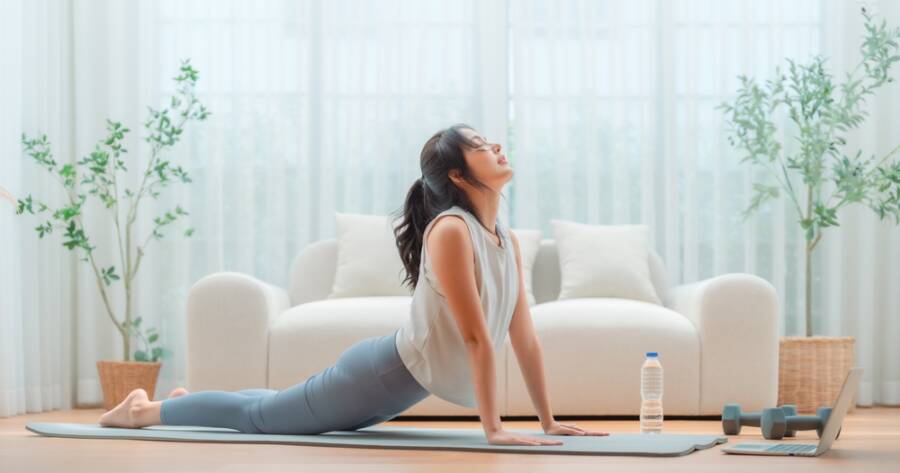When life feels heavy, fast-paced workouts aren’t always what you need. Sometimes, the most powerful way to reset your mind is through slow, intentional movement. Gentle forms of exercise like walking, yoga, and stretching create space to breathe, reset, and reconnect–without the pressure of performance or intensity. These practices don’t just support your physical health; they help quiet racing thoughts, ease tension, and bring clarity to a cluttered mind.
Why Gentle Movement Works Wonders on the Brain
Gentle exercise shifts your nervous system into a calmer state. Instead of triggering adrenaline and stress hormones, it encourages the release of endorphins (the body’s natural mood boosters) while promoting better blood flow and oxygen to the brain. That’s a recipe for clearer thinking, more patience, and a calmer outlook on your day.
Unlike high-impact workouts that can sometimes exhaust or overstimulate you, low-intensity movement invites presence. Your body softens, your breath deepens, and your thoughts slow down. It’s less about chasing results and more about creating harmony between body and mind. That harmony can be the difference between feeling overwhelmed and feeling grounded.
Walking: A Moving Meditation With Big Benefits
Never underestimate the power of a walk, especially one taken without distractions. Whether it’s a stroll around the block or a meander through the woods, walking clears mental fog, lowers cortisol levels, and boosts creativity. It’s one of the simplest, most accessible ways to calm your mind and connect with your surroundings.
Walking also gives your thoughts space to untangle themselves. Without screens or pressure, your mind naturally shifts into a more reflective, problem-solving mode. Add a podcast, music, or simply silence, and it becomes a moving meditation that’s good for your heart and your head.
Yoga: Slow Down to Reconnect
Yoga is more than stretching–it’s a full-body invitation to pause, breathe, and listen. Even the gentlest forms of yoga help regulate your nervous system, reduce anxiety, and promote emotional balance. It encourages mindfulness by connecting breath to movement and helping you tune in to what your body needs in each moment.
You don’t need fancy gear or an advanced practice to benefit. Just 10 to 20 minutes of slow, intentional poses–like child’s pose, cat-cow, or gentle twists–can help release stored tension and shift your mood. For those carrying stress in their shoulders, jaw, or lower back, yoga provides both physical and emotional relief.
Stretching: A Daily Ritual for Mental Reset
Stretching often gets overlooked, but it holds a quiet power. When done mindfully, it becomes a grounding practice that releases physical tension and creates space for stillness. It’s also incredibly accessible–no mat, equipment, or schedule required.
Try starting or ending your day with a short stretch session. Focus on opening areas where stress tends to live: neck, hips, shoulders, and back. Breathe deeply into each stretch, holding it for at least 30 seconds. These small moments of pause can quickly become a calming ritual that helps reset both your body and your mood.
Let Go of the “Workout” Mindset
Not every form of movement needs to burn calories or hit a step goal. Gentle exercise reminds us that moving our bodies can be restorative, not just results-driven. When you shift your focus from performance to presence, movement becomes less about obligation and more about kindness.
Allow your body to guide you. Some days might call for a long, slow walk. Others, just a few stretches between meetings. It all counts. Consistency matters more than intensity, and your mind will thank you for showing up—even if it’s just for five minutes at a time.
Build a Routine That Supports Your Peace
The key to using movement for mental clarity is making it part of your rhythm, not a once-a-month reset. Start small: a short walk after lunch, a few yoga poses before bed, or a stretch break when the afternoon slump hits. The more you practice, the more your body and mind begin to crave it.
You can also stack gentle movement with other calming habits. Pair a walk with your favorite playlist or follow your morning coffee with a few sun salutations. When you link movement with joy and calm, it becomes something you look forward to, not a task to cross off.
A Softer Path to Mental Strength
Moving your body doesn’t have to be all-or-nothing. Gentle exercise offers a quieter path to well-being–one built on compassion, breath, and intention. Whether you’re walking, stretching, or easing into a yoga flow, each mindful movement creates space for clarity, calm, and connection. When you move gently, you don’t just feel better physically, you think more clearly, sleep more soundly, and handle life’s stresses with more grace.

